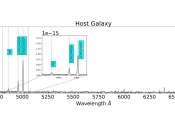New rare 'green bean' galaxy discovered
Astronomers from New Mexico State University (NMSU) and elsewhere report the discovery of a new galaxy of a rare class, dubbed "green bean." The finding, made with the Karl G. Jansky Very Large Array (VLA), was presented ...









